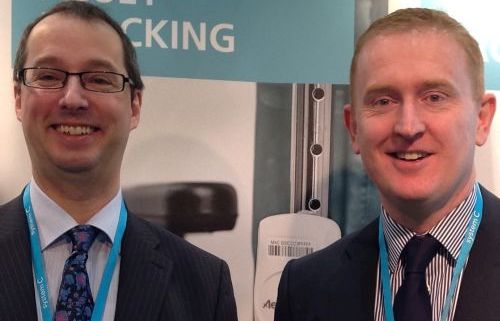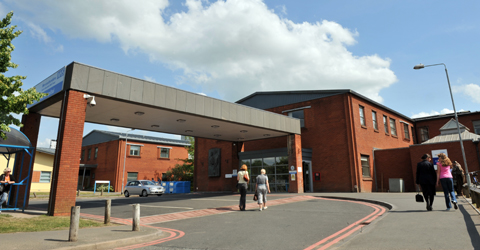Following the successful deployment of an RTLS system at its Worcestershire Royal Hospital, the Worcestershire Acute Hospitals NHS Trust is expanding the system to its two other facilities to manage inventory of high-value equipment. The system, consisting of Stanley Healthcare Wi-Fi RFID tags and MobileView software, and Cisco Wi-Fi nodes, was installed and integrated by British software company and Stanley partner BT IT Services Ltd., previously known as BT Convergent Solutions Ltd.
In 2011 the hospital found that some of its medical equipment had gone missing. Managing inventory of wheelchairs, beds and infusion pumps, among other high-value items, was a time-consuming manual task, and some items were managing to disappear. The management decided the best solution was a proactive one that could ensure assets were being managed securely and automatically, preventing such incidents in the future.
Worcestershire Royal Hospital, which opened in 2002, includes specialty care such as stroke services and cardiac stenting. It sought a tracking solution that would be able to identify the location of equipment throughout its facility including nine operating theaters, neo-natal intensive care and its cardiac catheterization laboratory.
“Stanley Healthcare offered a better and more complete package than their competition,” says Jeremy Thomas, consultant anesthetist and intensivist at Worcestershire Acute Hospitals NHS Trust.
The 500-bed four-floor hospital first installed the system in 2011 with about 1,000 tags applied to various items. The tags include Stanley Healthcare’s T2, T2s, T2-EB plus, T3, T4 Bi-Directional and T5 Temperature tags. “Factors going into the choice of tags includes size, ease of attachment, battery life and signal strength,” says Kenton Madge, Stanley Healthcare’s commercial director for United Kingdom and Ireland.
Since the existing Wi-Fi network did not provide the functionality that would be needed for the RTLS system, it was replaced with Cisco Wi-Fi nodes.
MobileView software residing on the hospital’s server provides two key functions: It offers data regarding which items are cleaned, serviced and available; and it also enables the locating of items in real time. Each time a tagged item arrives at a maintenance area, the system identifies that event. When the item leaves that area, the system updates its status as clean and ready for use by a patient.
In addition to tracking high-value equipment, the hospital is also using the RTLS system for management of some visitors. For example, visiting engineers are issued tags when they arrive so that their location can be identified as they move around the hospital.
Thomas says the trust is also in the process of expanding the system to its two other facilities—Alexandra Hospital and Kidderminster Hospital and Treatment Centre—as well as adding new functionality to the system already in use at Worcestershire Royal Hospital. The trust intends to manage patients by providing RFID tags or wristbands to patients when they are admitted and identifying which rooms are full, as well as who is receiving what kinds of treatment. The system would also help the pre-operative clinic manage its patient flow. The hospital also hopes to use the system to monitor usage of hand-washing dispensers by identifying each hand-washing event prior to, and after, visiting with a patient.
The trust plans to install Stanley’s Hugs Wi-Fi ankle tags for infants and Kisses Wi-Fi wrist tags for mothers, to track the location of newborns and ensure none are removed from the ward by an unauthorized party. “We are looking to integrate this into our package. In a similar vein, the tagging of staff and patients will become more important to improve safety and patient flow.”
Since the inventory tracking system went live in Worcestershire Royal Hospital, Thomas says, clinicians and nurses have become more engaged with the hospital’s IT systems and the effort to improve efficiency. He adds that they now have more time “to do what they do best—care for patients” rather than searching for missing equipment. The system also provides better use of resources overall, he adds, since the system enables the hospital to use assets that might otherwise have been overlooked.
“The power to instantly find one specific item of equipment… cannot be underestimated,” Thomas says. He pointed to an example of 56 epidural pumps that were tagged and stored, and subsequently easily identified using MobileView software. He says one pump was being used as a demo for training and was located within minutes when staff went into the software. “It literally took just a moment to locate the item,” he says. The system also provides some assistance in shrinkage, he adds, since the MobileView software can display where an item was shortly before it disappeared from the premises, offering some data for investigating that loss.



